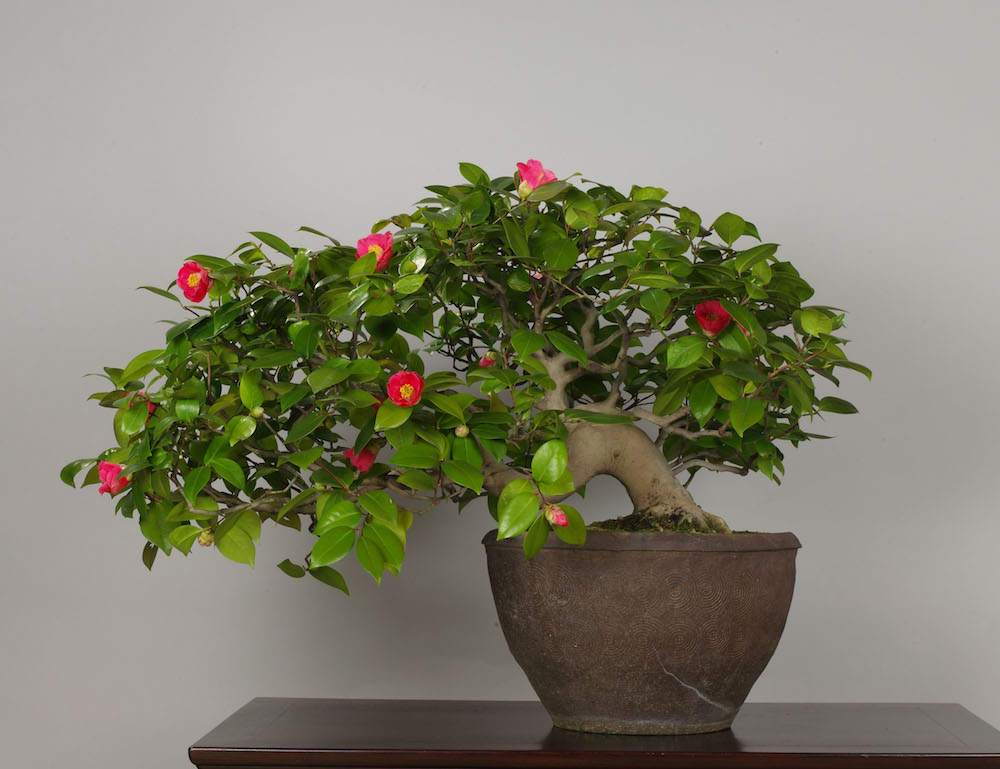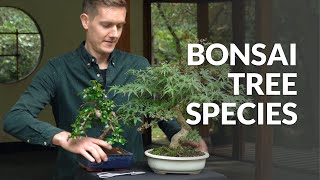Camellia Bonsai Care guidelines
The Camellia tree needs a warm place in semi-shade during the growing season and should be transferred to a cool frost-free place in winter, like a cold frame.
The rootball of the Camellia tree needs constant moisture and must never dry out completely. In winter the roots should be kept only slightly moist. The Camellia does not like calcareous water, so better use water with a neutral or slighty acidic pH value, like rain water. Continue reading about watering Bonsai trees.
Watering
Free lecture from the Beginners CourseThe Camellia needs a special acid feed which is produced for Azaleas, Hydrangeas and Camellias. During the growing season feed the tree every week with liquid fertilizer or apply a solid organic fertilizer every four weeks. Do not fertilize while the tree is flowering.
Hard pruning of the Camellia tree is best done in spring after flowering and will promote back-budding. Remove wilted flowers and trim new shoots back to two or three leaves. Unwanted buds and shoots are removed at any time. Camellia trees can best be wired in Winter. The bark is very tender and wire marks stay visible for a long time. It is a good idea to cover the wire with kitchen paper or masking tape before winding it around the Camellia's branches. Guy wires are also a good way to pull branches into the desired position. Continue reading about pruning Bonsai trees.
Camellia trees should be repotted every two or three years in early spring. Prune the roots only lightly. Use a well-draining lime-free soil like Kanuma. Continue reading about repotting Bonsai trees.
Camellia trees can be propagated from from seed in spring or from semi-hardwood cuttings in mid-summer. Air-layering is also possible. Growing seedlings is a very slow method and it will take many years until the young plants will flower.
Scale, mealy bugs, vine weevil (larvae and beetles), petal blight, canker, leaf gall, root rot and camellia yellow mottle leaf virus can attack the Camellia tree. If pests or diseases occur, use a specific pesticide or ask a professional gardener for help in severe cases. In general, vigorous Camellias are hardly attacked by pests and diseases. If they occur, also try to improve your tree's growing conditions. For more detailed information on these techniques, check out our Bonsai tree care section.

Japanese camellia Bonsai (Yamatsubaki)
General information about the Camellia Bonsai tree
The camellia is originally native to East-Asia and is not fully frost hardy. Camellia sinensis is the real tea plant. The most popular species for bonsai are Camellia japonica, Camellia reticulata and Camellia sasanqua. C. sasanqua is the smallest and most compact species, but it is more sensitive to frost than other species. The Camellia tree is a good choice for an attractive bonsai tree with lovely flowers that appear at the end of the twigs in late winter or early spring. It is not very frost hardy, especially the flower buds, and needs protection in winter. If you need help identifying your tree, take a look at our Bonsai tree identification guide.





